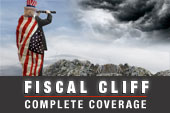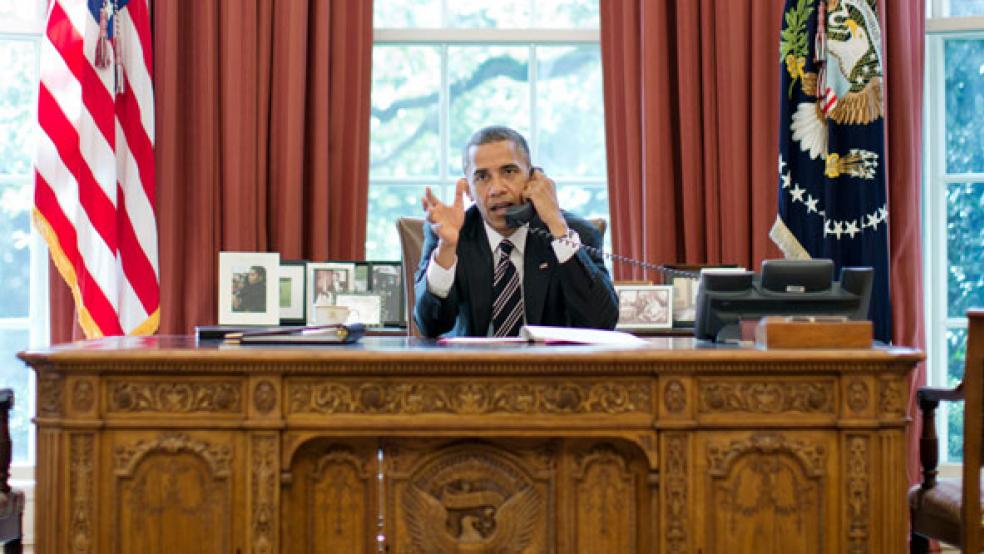The election is over. After three feisty debates, hundreds of campaign stops, billions spent on ads and countless candidate "robo-calls," America has re-elected Barack Obama as Commander in Chief. Now the real work begins. The economy is eking out a half-hearted recovery, and housing is slowly beginning to perk up. However, unemployment remains at a stubborn 7.9 percent, investors are skittish and businesses are still reluctant to spend.
RELATED: Economists Look for Fiscal Cliff Compromise
What should Obama prioritize over the next four years? “The first thing he needs to do is solve the immediate short-term fiscal cliff problem," says Wharton finance professor Franklin Allen. "The second is to put us on the road to long-term fiscal sustainability," which will probably involve a reform of Medicare. Third, he suggests, is to decide how to reform the corporate and personal tax codes. And fourth: Figure out what to do about the mortgage market and government-supported enterprises such as Fannie Mae and Freddie Mac.

Allen’s views reflect those of several Wharton professors, who point to the so-called “fiscal cliff” as the highest short-term priority, followed by comprehensive budget reform and a re-thinking of the tax code and some entitlement programs.
“Getting the economy up and running again at full steam is job one,” says Wharton professor of business economics and public policy Robert P. Inman, adding that another round of fiscal stimulus may be needed, preferably in the form of broad-based tax cuts. To boost jobs, Inman favors federal programs that invest in human capital and skills development rather than infrastructure projects, which he sees as a role for the states. Long term, bringing the federal deficit under control is a “more pressing” priority. But in the short term, he says, “the main thing here is to not go off the fiscal cliff.”
AVOIDING A DOUBLE-WHAMMY
The “fiscal cliff” refers to the expiration of the Bush-era tax cuts with simultaneous cuts in government spending, a $600 billion double-whammy of austerity that will kick-in on January 1 unless lawmakers find a way to avoid it. The Congressional Budget Office and the Federal Reserve have warned that the economy could fall back into recession next year if lawmakers do not find a way to resolve the issue.
“Certainly, we do not want to repeal the Bush tax cuts,” Inman says. “That would be a significant cost in terms of incentive effects.” Wharton business economics and public policy professor Mark Duggan suggests that if the fiscal cliff is not avoided, many predict it will "have a very contractionary effect. It will lead economic growth to slow down.”

Duggan sees the fiscal cliff as a short-term crisis with a long-term opportunity to reform the tax code and bring government spending in line with revenues. “It gives policy makers a real opportunity to make tax policy and spending a little smarter,” he says. “How are we going to change the tax code? Are we going to try to raise tax revenue as a share of the economy, or are we going to do all the reduction on the spending side? Or are we just going to keep running trillion-dollar deficits? That's a first-order issue for the economy, because that affects how rapidly the economy will grow.”
TAMING ENTITLEMENTS
On the spending side, reforming social security and Medicare are two keys to long-term fiscal health, but the nation’s aging population makes the task an unpopular one. In 2010, there were five non-elderly adults in the United States for every person over 65. By 2030, the ratio will be 3 to 1 as the pool of elderly citizens expands in size. “The demographics are going to get worse every year,” Duggan says. “Every month, every year that politicians wait to reform those programs, it gets politically harder to [do] because the number of elderly citizens grows.”
The impact of Medicare and Medicaid is also expected to increase over time as a result of changes in the Affordable Care Act. These entitlement programs need to be tackled as part of overall budget reform, according to Duggan. “On average, about $8,000 of your taxes [a year] are going to Medicare and Medicaid,” he says. “And that’s going to grow more rapidly over time compared to incomes” because of changing demographics. “Whatever we do, those two programs are going to need to be reformed one way or another, so hopefully we can do it in a smart way. [These programs] are the biggest driver of our budget deficit.”
Indeed, the case can be made that transfers to the elderly, which are "by far the largest single – and most rapidly growing – part of entitlements, are the main causes of government ills,” says Mark V. Pauly, Wharton professor of health care management. Fixing Medicare should be among the highest of the president’s priorities, Pauly notes. “Since [Medicare] is one of the two main reasons driving the deficit -- Social Security being the other – I think it is more important [to address that program] than tax reform per se. We need to control the growth of transfers to seniors to keep down marginal tax rates and the deficit. Without [doing so], tax reform at best moves around the chairs and may do more harm than good.”
Fixing Medicare involves finding ways to slow the growth rate of spending while not depriving seniors of high-value benefits, Pauly adds. Some reductions will be required in areas that increase spending, such as new but beneficial technologies, but “the biggest challenge will be to mobilize political will and work out the political compromise necessary to have spending grow more slowly than it would if no action is taken.”
'GROWN-UPS AREN'T THERE'
Compromise is what Washington needs most, but it’s not clear how that is going to happen, says Kent Smetters, Wharton professor of business economics and public policy. “You used to have grown-ups in the Senate.... The grown-ups just aren’t there anymore. It’s becoming so fragmented.”
According to the CBO, federal debt came to 73 percent of gross domestic product in fiscal 2012. Spending is increasing at such a rapid rate that it's not possible to raise enough revenues to match it. Investors are increasingly reluctant to invest in businesses in the U.S. because they see massive tax increases on the horizon. Yet the government has remained deadlocked. “These are big problems and they are going to require big solutions,” Smetters says.
RELATED: The Next President Will Step into Deficit Hell
Smetters argues that the fiscal cliff is a minor issue compared to long-term deficit spending. “The fiscal cliff is a short-run problem. The big problem is the fact that we have massive amounts of debt, and we’re going to have to figure out how to [achieve] balance.” While it may be tempting to push back the deadline for the fiscal cliff and avoid painful austerity measures in the short term, the long-term problem will only get worse if it isn't addressed, Smetters says. Besides, given the nature of today's economic malaise, it's possible yhe economy will limp along for several more years. “We’ve got to stop using this argument about the fiscal cliff to say, ‘We have to wait until the economy recovers.’ The economy may just never recover.”
TWO 'DAGGERS'
Without good solutions to the fiscal cliff and long-term fiscal imbalances, the fragile housing market recovery could falter, warns Wharton real estate professor Susan M. Wachter. “We’ve got two daggers at the heart of the housing recovery,” she says. In the short run, there is the danger of the fiscal cliff pushing the economy back into recession. And in the long run, there's the danger interest rates will spike if the country does not address its deficit spending. Both issues are important because the mortgage market depends on low, long-term interest rates.
Wachter also would like to see the president add the housing finance system to his list of things to fix. “The housing finance system is broken. There’s a shadow hanging over the mortgage market.” The housing market is beginning to recover, but the recovery is slow and weak, she adds. Most people still don’t have confidence that prices in the housing market have stabilized. Construction starts are at 600,000, which is far below their peak of 1.6 million before the recession.
On top of that, it has become increasingly difficult for buyers to get a mortgage. The average credit score for applicants rejected for mortgages and refinances backed by Fannie Mae and Freddie Mac is now at 760, higher than the average score of applicants who were accepted in earlier years. “You have to have pristine credit, and it takes forever,” Wachter notes. The situation isn’t good for taxpayers, either: 90 percent of mortgages today are underwritten by Fannie, Freddie or the Federal Housing Administration, a fact she says “is not tolerable for the long-run debt.”
Wachter suggests the president work to establish clear “rules of the game” to encourage more private sector loan origination. She sees a need for better rules and information standards for securitization, which has plummeted since the start of the crisis. Annual issuance of mortgage-backed securities has dropped to $1 billion, down from $1.191 trillion at its peak in 2005. Transparency is the key. “Without information on the amount of leverage in the housing sectors, investors themselves are wary of going back into the market,” says Wachter.
Fixing housing is important to the overall economy: There is a direct link between the demand for housing and job growth, Wachter adds. “Jobs will grow with housing sector growth.”
This article originally appeared at Knowledge@Wharton .




